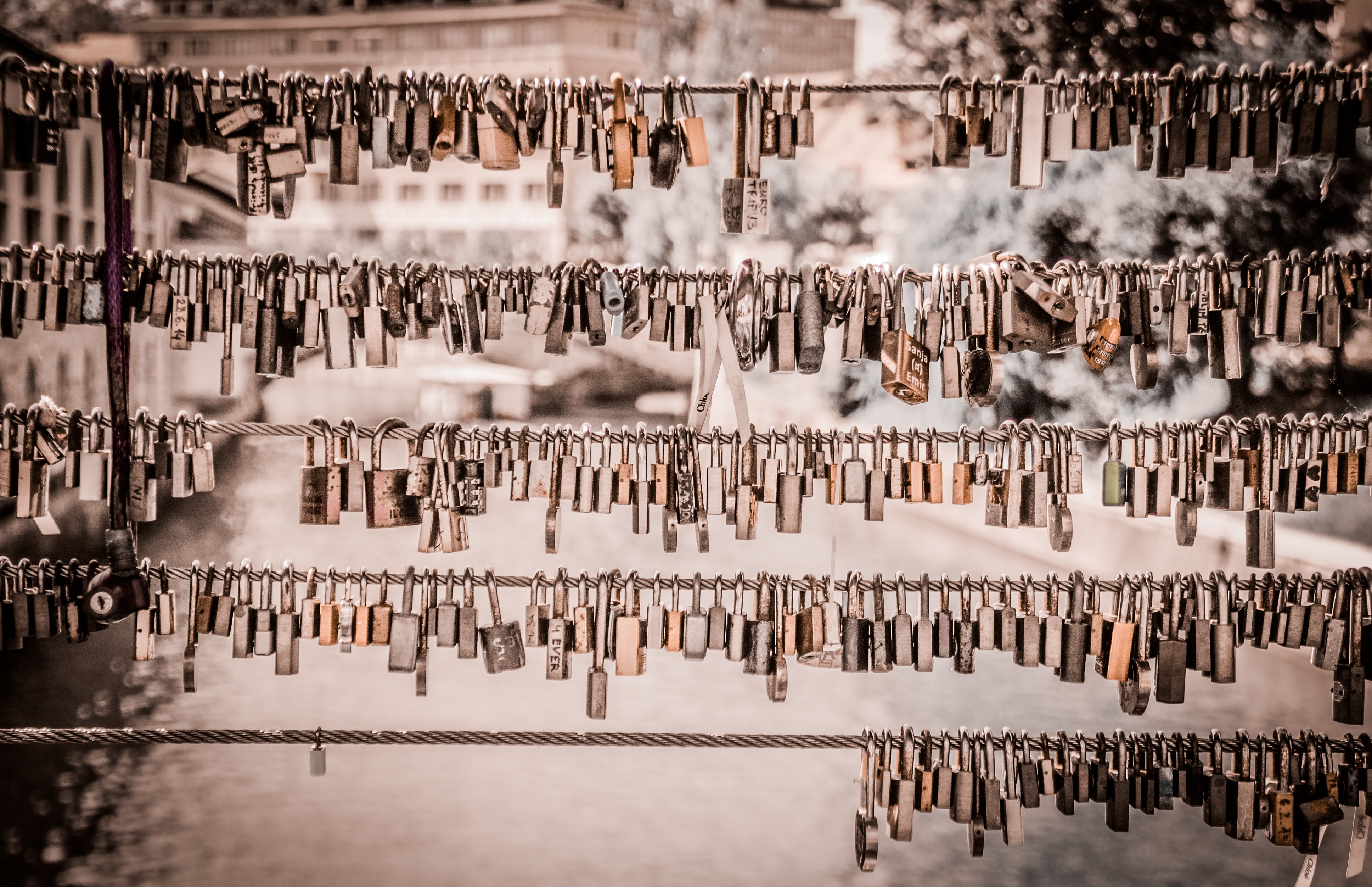A Philosophical Survey of Love Locking
Written by Stephen Kagarise.
Love locking is the shared act of placing one or more padlocks on a cable railing by people who want to signify their commitment to one another. Typically, this railing is on a ledge overlooking a city or other scenic spot. In its current practice, love locking seems to have three main sorts.
In the first sort, there is only one lock. Often the names of the people involved will be written on the side of the lock in pen. Sadly, this writing tends to deteriorate over time, as the lock ages and turns to rust. However, this can be interpreted as a corroboration of what the single lock implies – namely, that the two have become one. A loss of name is a loss of individual identity. This sort of love locking seems to suggest the greatest unity of the couple.
The second sort involves two locks. They are attached to the railing, as well as to one another. Here we have some indication that the couple is in fact two separate people, since there are two locks, not just one. What is interesting is how they are both attached to the railing, which can be taken as a sign of their equality and independence in the relationship. The railing is the world in which they exist as a couple. Neither has lost touch with the reality of that world.
The third sort of love locking also involves two locks, but in this case, only one is attached to the railing, while the other is attached to the first lock alone. It has lost its attachment to the railing, or world, and is completely reliant on the other lock to keep from falling into the abyss. Under the circumstances, this would seem to indicate the most dependent of relationships.
Deviation from these three sorts is highly limited. Sometimes you may see colored ribbon attached to the railing, or a heart-shaped piece of plastic on a key ring. But considering how a love lock is meant to signify a particular relationship, and how greatly relationships can differ, I wonder if it might be possible – and perhaps even necessary – to create some new ways of love locking in order to reflect this variety and elevate the practice to an art.
An example in this direction is what I call “the message in a bottle.” This is a four-digit combination lock attached to the railing by one person, not a couple. Someone who is searching for a partner, upon finding the lock, tries to guess the correct four-digit sequence. Opening the lock would be taken as a sign of good fortune for both people involved, though only the unlocker would know about it. To remedy this, the locker could include the first four digits of his or her phone number on the lock, with the correct combination being the last four. It is likely that the lock will seize with rust before it is found or opened, so the locker is not actually engaged in a risky form of dating, so much as making a simple gesture of hope.
Another possibility is the circle of friends. For this, there would be as many locks as there are members in the group. These could be attached, one to the next, in a loop, which wraps around the railing.
The act of clicking a lock shut implies a certain measure of choice in committing to the relationship. It is almost like a contractual agreement. But is this true of all relationships? Sometimes we simply feel drawn to someone for no apparent reason and without being able to control it, and of course, that person may feel the same about us. To reflect this type of relationship, the use of magnets could be incorporated into love locking. Magnets in proximity are drawn to one another by nature. An obvious drawback is that magnets can be detached more easily than locks, putting this type of attachment at the mercy of whoever finds it. But this reflects reality, in which relationships are ended by someone else coming along.
Photographed by Rubén Bagüés on Unsplash
The Author
Stephen Kagarise is from Chapel Hill, North Carolina (USA) but considers Greensboro his adopted hometown. He has been teaching English at Chosun University since 2013. He enjoys reading, writing, and listening to music from the 1970s.



